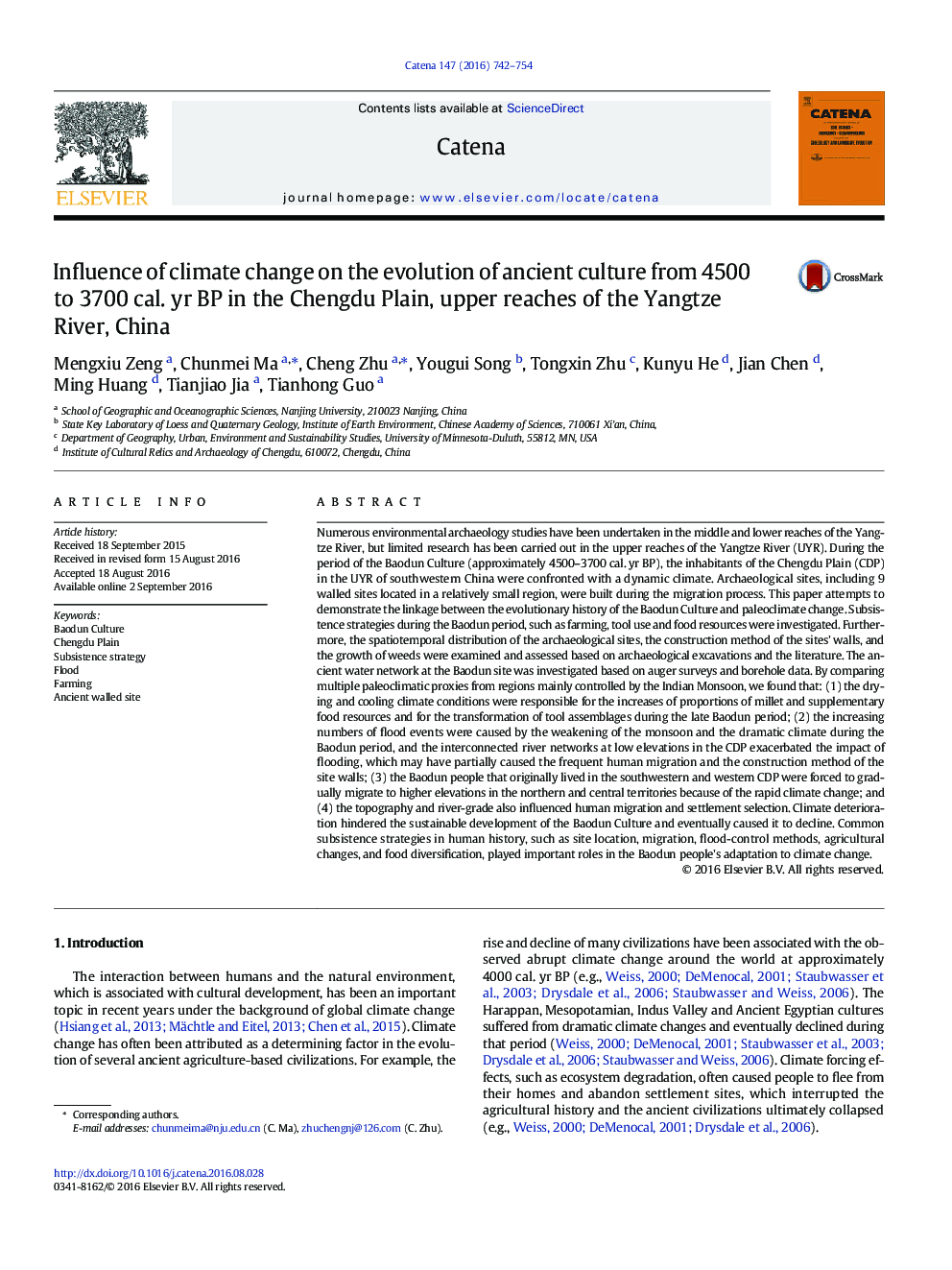| کد مقاله | کد نشریه | سال انتشار | مقاله انگلیسی | نسخه تمام متن |
|---|---|---|---|---|
| 6407805 | 1629205 | 2016 | 13 صفحه PDF | دانلود رایگان |

- Response of the Baodun Culture's decline to the 4000 cal. yr BP cold event
- Climate played a central role in the evolution of the Baodun Culture.
- Impacts of topography and hydro-climate conditions on the archaeological sites
- Agriculture transformation and diet diversification at approximately 4000 cal. yr BP
- Adaptation to the dynamic climate during the period of the Baodun Culture.
Numerous environmental archaeology studies have been undertaken in the middle and lower reaches of the Yangtze River, but limited research has been carried out in the upper reaches of the Yangtze River (UYR). During the period of the Baodun Culture (approximately 4500-3700 cal. yr BP), the inhabitants of the Chengdu Plain (CDP) in the UYR of southwestern China were confronted with a dynamic climate. Archaeological sites, including 9 walled sites located in a relatively small region, were built during the migration process. This paper attempts to demonstrate the linkage between the evolutionary history of the Baodun Culture and paleoclimate change. Subsistence strategies during the Baodun period, such as farming, tool use and food resources were investigated. Furthermore, the spatiotemporal distribution of the archaeological sites, the construction method of the sites' walls, and the growth of weeds were examined and assessed based on archaeological excavations and the literature. The ancient water network at the Baodun site was investigated based on auger surveys and borehole data. By comparing multiple paleoclimatic proxies from regions mainly controlled by the Indian Monsoon, we found that: (1) the drying and cooling climate conditions were responsible for the increases of proportions of millet and supplementary food resources and for the transformation of tool assemblages during the late Baodun period; (2) the increasing numbers of flood events were caused by the weakening of the monsoon and the dramatic climate during the Baodun period, and the interconnected river networks at low elevations in the CDP exacerbated the impact of flooding, which may have partially caused the frequent human migration and the construction method of the site walls; (3) the Baodun people that originally lived in the southwestern and western CDP were forced to gradually migrate to higher elevations in the northern and central territories because of the rapid climate change; and (4) the topography and river-grade also influenced human migration and settlement selection. Climate deterioration hindered the sustainable development of the Baodun Culture and eventually caused it to decline. Common subsistence strategies in human history, such as site location, migration, flood-control methods, agricultural changes, and food diversification, played important roles in the Baodun people's adaptation to climate change.
Journal: CATENA - Volume 147, December 2016, Pages 742-754